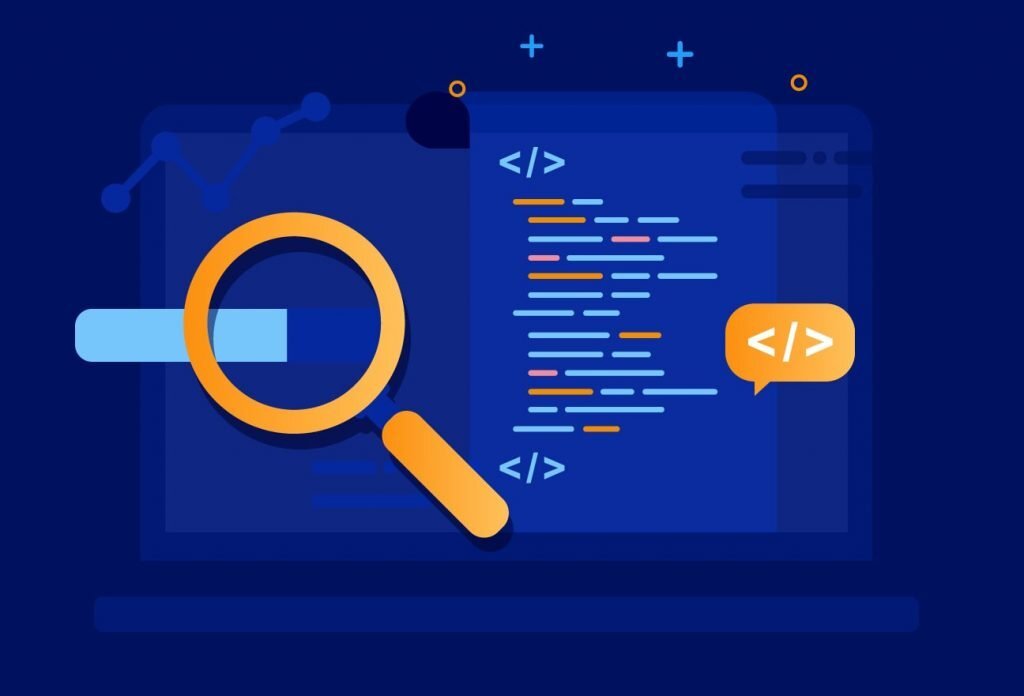Search engine optimization (SEO) is the process of improving the digital presence and relevance of a website or a web page in search engine results pages (SERPs) likes of Google and Bing. It is a vital strategy for any website that wants to rank high on Google and drive more organic traffic leads, and conversions. However, creating and optimizing web pages manually can be time-consuming and tedious, especially when you have a large and dynamic website with hundreds or thousands of pages. That’s where programmatic SEO comes in handy.
Programmatic SEO is a way to automate and scale your SEO efforts using data, software, and algorithms. It can help you create and optimize web pages at a massive scale, targeting long-tail keywords that have low competition but high relevance and intent. By doing so, you can capture more search traffic and increase conversions.
In this blog post, we will explain what programmatic SEO is, how it differs from traditional SEO, what its main purpose is, how to set it up correctly, and what are its advantages and disadvantages. We will also share some tips on how to find keywords, how many keywords to target, what are the best programmatic SEO software, some tools that can help you with this strategy, and how to learn programmatic SEO.
What is programmatic SEO?
Programmatic SEO is a method of creating and optimizing web pages programmatically, using existing data and pre-defined rules. Programmatic SEO can help you generate hundreds or thousands of SEO-friendly web pages in a short time, without having to write or edit each page manually. Programmatic SEO can be used for various types of websites, such as e-commerce, real estate, travel, or informational sites.
Programmatic SEO works by using data sources, such as databases, APIs, web scraping tools, or keyword research tools, to collect relevant information for your web pages. Then, it uses software tools, such as content management systems (CMS), web development platforms, or artificial intelligence (AI) models, to create and publish web pages based on templates and rules. Finally, it uses analytics tools, such as Google Search Console or Google Analytics, to monitor and optimize the performance of your web pages.
What is the difference between programmatic SEO and SEO?
The main difference between programmatic SEO and traditional SEO lies in their approach to content creation and optimization. Traditional SEO typically targets head keywords with manual content development (from copywriters), organized into topics and articles. In contrast, programmatic SEO uses automated content development to target long-tail keywords. The content is organized by templates that target specific keyword sets (built on entities and modifiers).
For example, let’s say you have an e-commerce website that sells shoes. With traditional SEO, you would create a few pages for each shoe category (e.g., sneakers, boots, sandals) and optimize them for relevant keywords (e.g., best sneakers for men). With programmatic SEO, you would create thousands of pages for each shoe product (e.g., Nike Air Max 90) and optimize them for various keyword combinations (e.g., Nike Air Max 90 black size 10).
What is the primary purpose of programmatic SEO?
The primary purpose of programmatic SEO is to drive more organic traffic and conversions to your website by targeting long-tail keywords and user intent. Long-tail keywords are more specific and less competitive than head keywords. They usually have lower search volume but higher conversion rate. User intent is the goal or need that a user has when searching online. It can be informational (e.g., how to tie a shoe), navigational (e.g., Nike website), transactional (e.g., buy Nike shoes), or commercial (e.g., Nike shoes reviews).
By creating web pages that match the long-tail keywords and user intent of your target audience, you can increase your chances of ranking higher in SERPs and attracting qualified traffic. For example, if someone searches for “Nike Air Max 90 black size 10”, they are likely ready to buy that specific product. If you have a web page that offers that product with relevant information (e.g., price, availability, shipping options), you can capture their attention and convert them into customers.
How to set up programmatic SEO correctly?
Setting up programmatic SEO correctly requires a systematic and data-driven process that involves the following steps:
- Keyword research and content planning: Identifying keywords is the foundation of programmatic SEO. You’ll need to use keyword research tools, such as Keywords Everywhere1, Ahrefs2, or Surfer SEO3, to find high-volume, low-competition keywords that match your niche and audience. You’ll also need to use keyword modifiers, such as location, price range, color, size, etc., to create long-tail keyword variations. Then, you’ll need to plan your content structure and hierarchy based on your keyword clusters.
- Design your page template: Before you can begin building the database of content, you need to know what the page layout will look like. You’ll need to use a web development platform or a CMS that allows you to create dynamic web pages based on templates. Some examples are Webflow4, WordPress5, or Shopify6. You’ll need to design your page template with the following elements: title, meta description, URL, headings, body text, images, links, call to action, etc. You’ll also need to ensure that your page template is mobile-friendly, fast-loading, and SEO-friendly.
- Identify and collect your data: The next step is to find and collect the data that will populate your web pages. You can use various data sources, such as databases, APIs, web scraping tools, or user-generated content. For example, if you have an e-commerce website that sells shoes, you can use a database of shoe products with their attributes (e.g., brand, model, color, size, price, etc.). You can also use an API to fetch product reviews from third-party platforms (e.g., Amazon). You can also use a web scraping tool, such as Octoparse7, to extract data from other websites (e.g., competitor sites).
- Build the database with content and labels: Once you have the data, you need to organize it into a database that can be connected to your web pages. You can use a spreadsheet tool, such as Google Sheets8, or a database tool, such as Airtable9, to store and manage your data. You’ll need to label each data point with the corresponding keyword and page template. You’ll also need to enrich your data with additional content, such as summaries, descriptions, or headlines. You can use AI tools, such as OpenAI10 or Copy.ai11, to generate content automatically based on your data.
- Build the CMS collection and page template: The next step is to connect your database to your web pages using a CMS. You’ll need to create a CMS collection that matches your database structure and labels. Then, you’ll need to link your page template to your CMS collection and map each element to the corresponding data field. This way, you can create and publish web pages dynamically based on your database.
- Connect the database to the website: The final step is to sync your database with your website and make sure that everything works as expected. You’ll need to use a tool that allows you to connect your database to your CMS and update your web pages automatically whenever you make changes to your data. Some examples are Nobull12, Zapier13, or Integromat14. You’ll also need to test your website for functionality, usability, and SEO performance.
- Test the site and make adjustments if required: The last step is to monitor and optimize your website for continuous improvement. You’ll need to use analytics tools, such as Google Search Console15 or Google Analytics16, to track your website’s performance in terms of traffic, ranking, conversions, etc. You’ll also need to use SEO tools, such as Moz17 or SEMrush18, to audit your website for technical issues, content quality, keyword cannibalization, etc. Based on the results, you’ll need to make adjustments to your data, content, or SEO strategy if required.
What are the advantages of programmatic SEO?
Programmatic SEO has many advantages over traditional SEO methods, such as:
- Increased efficiency: Programmatic SEO automates repetitive tasks such as keyword research, content creation, and link building, freeing up time and resources for more strategic tasks.
- Speed to market: Creating pages programmatically is the fastest way to deploy a website project. In just seconds, you can create landing pages by leveraging data automation.
- Scalability: One of the main benefits of programmatic SEO is that it allows you to scale your SEO efforts exponentially. You can create thousands or millions of web pages without having to worry about manual work or human errors.
- Consistency in design: Programmatic SEO ensures that all your web pages have a consistent design and layout across the website. This improves user experience and brand recognition.
- Uniqueness: Programmatic SEO can help you create unique and relevant content for each web page based on user intent and keyword variations. This can help you stand out from the competition and avoid duplicate content issues.
What are the top 10 programmatic SEO problems?
Programmatic SEO is not without its challenges and pitfalls. Some of the common problems that you may encounter when implementing programmatic SEO are:
- Indexing issues: One of the biggest challenges of programmatic SEO is getting Google bots to crawl and index all your web pages. Google may not be able to discover or prioritize all your pages due to their sheer number or low quality. You need to make sure that your pages are accessible, relevant, and updated regularly. You also need to use sitemaps, internal links, and canonical tags to help Google understand your site structure and avoid duplicate content issues.
- Poor execution: Programmatic SEO requires careful planning and execution. If done poorly, it can hurt your site’s growth and reputation. For example, if you create too many thin or irrelevant pages, you may face penalties from Google or negative feedback from users.
- Data limitations: Programmatic SEO depends largely on the quality and quantity of the data sources that are used to generate and optimize web pages. If the data sources are inaccurate, outdated, incomplete, or unreliable, the programmatic pages may suffer from low quality, irrelevance, duplication, or errors. Therefore, it is important to choose trustworthy and authoritative data sources that can provide relevant and updated information for the target keywords and audience.
- Quality: Maintaining the quality of your programmatic pages can be challenging, as you are relying on data and automation to generate content. You need to ensure that your data sources are accurate, reliable, and up-to-date. You also need to monitor your pages for errors, typos, broken links, and other issues that may affect user experience and SEO performance.
- Uniqueness: Creating unique and engaging content for your programmatic pages can be hard, as you are targeting similar keywords with similar intent. You need to avoid keyword stuffing, spinning, or copying content from other sources. You also need to add value to your pages by providing useful information, insights, or solutions that match the user’s query.
- Relevance: Ensuring the relevance of your programmatic pages can be tricky, as you are dealing with a large and diverse audience with different needs and preferences. You need to understand the search intent behind each keyword and provide content that satisfies it. You also need to segment your audience and personalize your content based on their location, device, behavior, or other factors.
- Competition: Facing competition from other websites can be tough, as you are competing for the same keywords and traffic. You need to conduct a competitive analysis to identify your strengths and weaknesses, as well as the opportunities and threats in your niche. You also need to differentiate yourself from your competitors by offering something unique, valuable, or better than them.
- Authority: Building authority for your programmatic pages can be challenging, as you are creating new pages that may not have much trust or credibility in the eyes of Google or users. You need to establish yourself as an expert or a leader in your field by providing high-quality content, evidence, or testimonials. You also need to acquire backlinks from reputable sources that can vouch for your content and boost your rankings.
- Speed: Optimizing the speed of your programmatic pages can be difficult, as you are generating dynamic content that may require more resources or processing time. You need to ensure that your pages load fast and smoothly on all devices and browsers. You also need to use caching, compression, minification, or other techniques to reduce the size and number of requests on your pages.
- Security: Protecting the security of your programmatic pages can be problematic, as you are exposing your data and code to potential threats or attacks. You need to ensure that your pages are secure and compliant with the latest standards and regulations. You also need to use encryption, authentication, or other methods to safeguard your data and code from unauthorized access or manipulation.
- Scalability: Scaling up your programmatic SEO strategy can be complicated, as you are dealing with more data, more pages, more keywords, and more traffic. You need to ensure that your infrastructure can handle the increased load and demand without compromising performance or quality. You also need to use automation, monitoring, or testing tools to streamline your workflow and optimize your results.
- Measurement: Measuring the effectiveness of your programmatic SEO strategy can be confusing, as you are tracking multiple metrics across multiple platforms. You need to define your goals and key performance indicators (KPIs) for each page and keyword. You also need to use analytics tools to collect, analyze, and report on your data and performance.
How to find keywords for programmatic SEO?
Finding keywords for programmatic SEO is a crucial step in this strategy. Here are some tips for selecting keywords for programmatic SEO pages:
- Conduct keyword research to identify high-volume, low-competition keywords that are relevant to your niche and audience. You can use tools like Google Keyword Planner, Ubersuggest, or Ahrefs to find keyword ideas and data.
- Use long-tail keywords that are specific to your topic and intent. Long-tail keywords are phrases that consist of three or more words and have a lower search volume but a higher conversion rate. For example, instead of targeting “shoes”, you can target “best running shoes for women”.
- Use keyword variations to avoid keyword stuffing and increase your chances of ranking for different queries. Keyword variations are synonyms, related terms, or modifiers that you can add to your main keyword to create more combinations. For example, you can use “top”, “best”, “reviews”, or “2023” as modifiers for your main keyword.
- Use natural language keywords that mimic how people talk and search. Natural language keywords are conversational and question-based keywords that reflect the user’s intent and context. For example, instead of targeting “running shoes women”, you can target “what are the best running shoes for women?”.
How many keywords should be targeted while doing programmatic SEO?
There is no definitive answer to how many keywords you should target while doing programmatic SEO, as it depends on your niche, audience, goals, and resources. However, a general rule of thumb is to target as many keywords as possible, as long as they are relevant, profitable, and achievable.
Some factors that may influence the number of keywords you target are:
- The size and scope of your website: If you have a large and dynamic website with hundreds or thousands of pages, you may want to target more keywords to cover more topics and queries. If you have a small and static website with a few pages, you may want to target fewer keywords to focus on your core offerings and audience.
- The competition and difficulty of your keywords: If you are targeting highly competitive and difficult keywords that have a lot of established and authoritative websites ranking for them, you may want to target fewer keywords to concentrate your efforts and resources. If you are targeting low-competition and easy keywords that have less or weaker websites ranking for them, you may want to target more keywords to take advantage of the opportunities and gaps in the market.
- The search volume and conversion rate of your keywords: If you are targeting high-volume and high-conversion keywords that have a lot of potential traffic and revenue, you may want to target fewer keywords to maximize your returns and ROI. If you are targeting low-volume and low-conversion keywords that have less or marginal traffic and revenue, you may want to target more keywords to diversify your sources and income.
As a rough estimate, some experts suggest that you should target at least 1000 keywords for programmatic SEO, as this will give you enough data and insights to optimize your pages and performance. However, this number may vary depending on your specific situation and objectives.
What are the best 10 programmatic SEO software tools and why?
Programmatic SEO software tools are applications that help you automate and streamline various aspects of programmatic SEO, such as keyword research, content creation, optimization, analysis, and reporting. Here are some of the best programmatic SEO software tools and why they are useful:
- Airtable: Airtable is a cloud-based spreadsheet tool that allows you to organize, manage, and collaborate on your data in a visual and intuitive way. You can use Airtable to store, filter, sort, and manipulate your keyword data, as well as create landing page templates using formulas and fields.
- Zapier: Zapier is a cloud-based automation tool that allows you to connect different apps and services without coding. You can use Zapier to automate various tasks related to programmatic SEO, such as fetching data from APIs, generating content from templates, publishing pages to CMS platforms, or sending reports to email or Slack.
- Webflow: Webflow is a cloud-based web design tool that allows you to create responsive and interactive websites without coding. You can use Webflow to design and build your landing page templates using drag-and-drop elements, custom code, or integrations with other tools.
- Contentful: Contentful is a cloud-based headless CMS platform that allows you to manage your content in a structured and modular way. You can use Contentful to store, edit, and deliver your content across different channels and devices using APIs or SDKs.
- GPT-3: GPT-3 is an artificial intelligence tool that uses deep learning to generate natural language text based on a given input or prompt. You can use GPT-3 to create engaging and relevant content for your programmatic pages using natural language queries or commands.
- Screaming Frog: Screaming Frog is a desktop-based web crawler tool that allows you to audit and analyze your website’s technical SEO aspects. You can use Screaming Frog to check your programmatic pages for issues such as broken links, duplicate content, missing tags, or slow loading speed.
- Google Search Console: Google Search Console is a web-based tool that allows you to monitor and optimize your website’s technical SEO aspects. You can use Google Search Console to check your website’s crawlability, indexability, performance, and issues on Google Search. You can also use it to submit sitemaps, inspect URLs, view backlinks, and more.
What are the disadvantages of programmatic SEO?
Programmatic SEO is not a perfect solution for every website and situation. There are some disadvantages and drawbacks that you should be aware of before implementing this strategy. Some of them are:
- Cost: Programmatic SEO can be expensive, as you may need to invest in various tools, platforms, services, or resources to create and optimize your programmatic pages. You may also need to hire or train staff to manage and maintain your programmatic SEO strategy.
- Complexity: Programmatic SEO can be complex, as you may need to deal with various technical, data, or content aspects that require advanced skills or knowledge. You may also need to constantly monitor, test, and update your programmatic pages to ensure their performance and quality.
- Risk: Programmatic SEO can be risky, as you may encounter various challenges or problems that can affect your programmatic pages or website. You may also face potential penalties or backlash from Google or users if your programmatic pages are low-quality, irrelevant, spammy, or deceptive.
How to learn programmatic SEO?
Programmatic SEO is a relatively new and evolving field that requires continuous learning and improvement. If you want to learn more about programmatic SEO and how to do it correctly, here are some resources and tips that can help you:
- Read digital marketing & SEO blogs and articles that cover programmatic SEO topics. You can learn from the experts and practitioners who share their insights, experiences, and best practices on programmatic SEO.
- Watch videos and podcasts that feature programmatic SEO discussions. You can listen to the opinions and advice of the industry leaders and influencers who talk about programmatic SEO trends, challenges, and opportunities.
- Join online communities and forums that focus on programmatic SEO topics. You can interact with other programmatic SEO enthusiasts and professionals who share their questions, answers, tips, and feedback on programmatic SEO.
- Take online courses and certifications that teach programmatic SEO skills. You can acquire the knowledge and competence that are required for programmatic SEO implementation and optimization.
Conclusion:
Programmatic SEO is a powerful digital marketing strategy that can help you create and optimize web pages at scale using data and automation. By doing so, you can target long-tail keywords that have low competition but high relevance and intent. This can result in improving your digital presence, and bring more search traffic and conversions to your website.
However, programmatic SEO is not easy or simple. It involves various challenges and benefits that you need to consider and balance. You also need to use various tools and techniques that can help you with this strategy.
If you want to learn more about programmatic SEO and how to do it correctly to strengthen the digital presence of your brand, you can use the resources and tips that we have provided in this article. We hope that this article has given you a better understanding of what programmatic SEO is and how to do it correctly.









